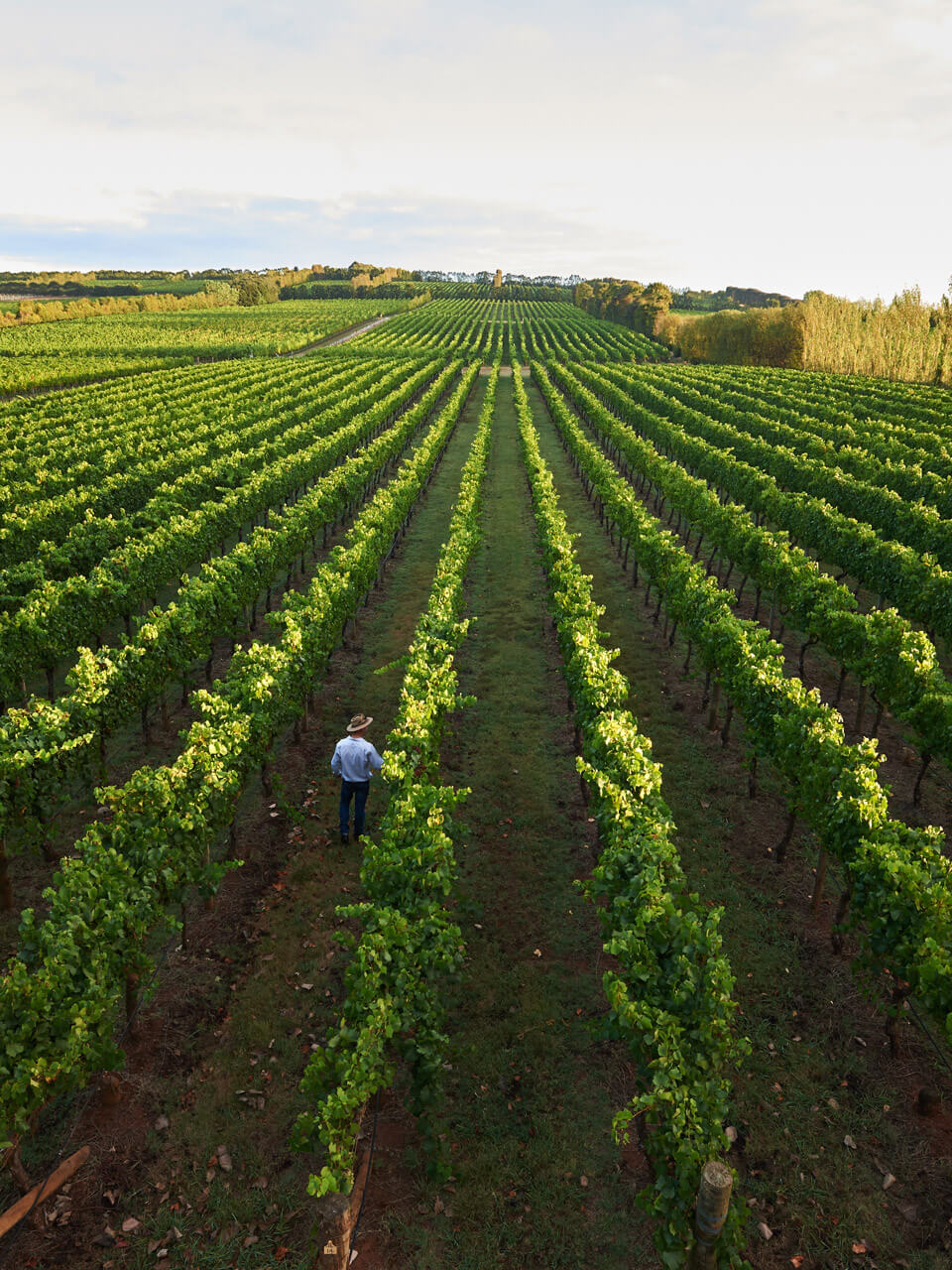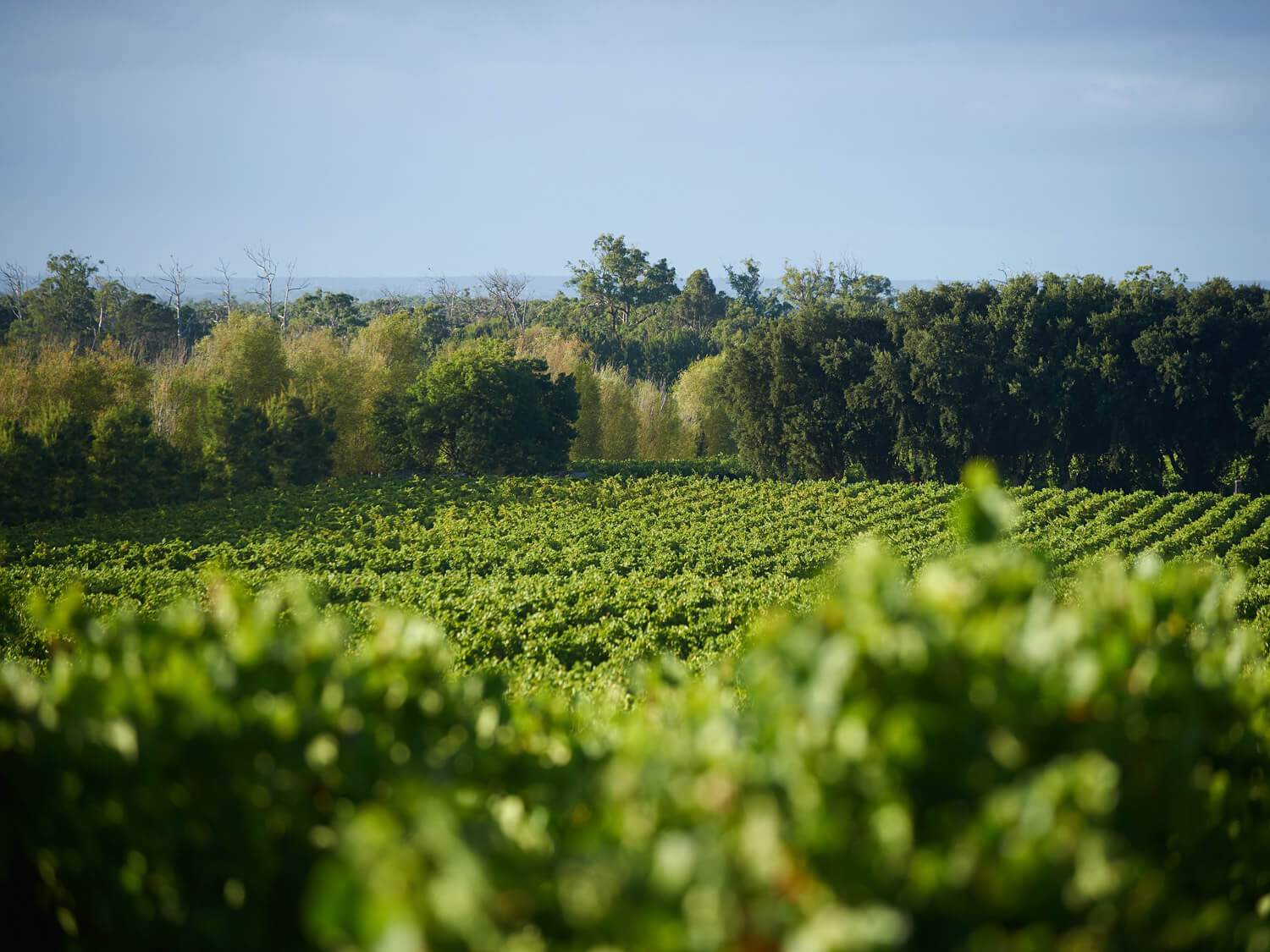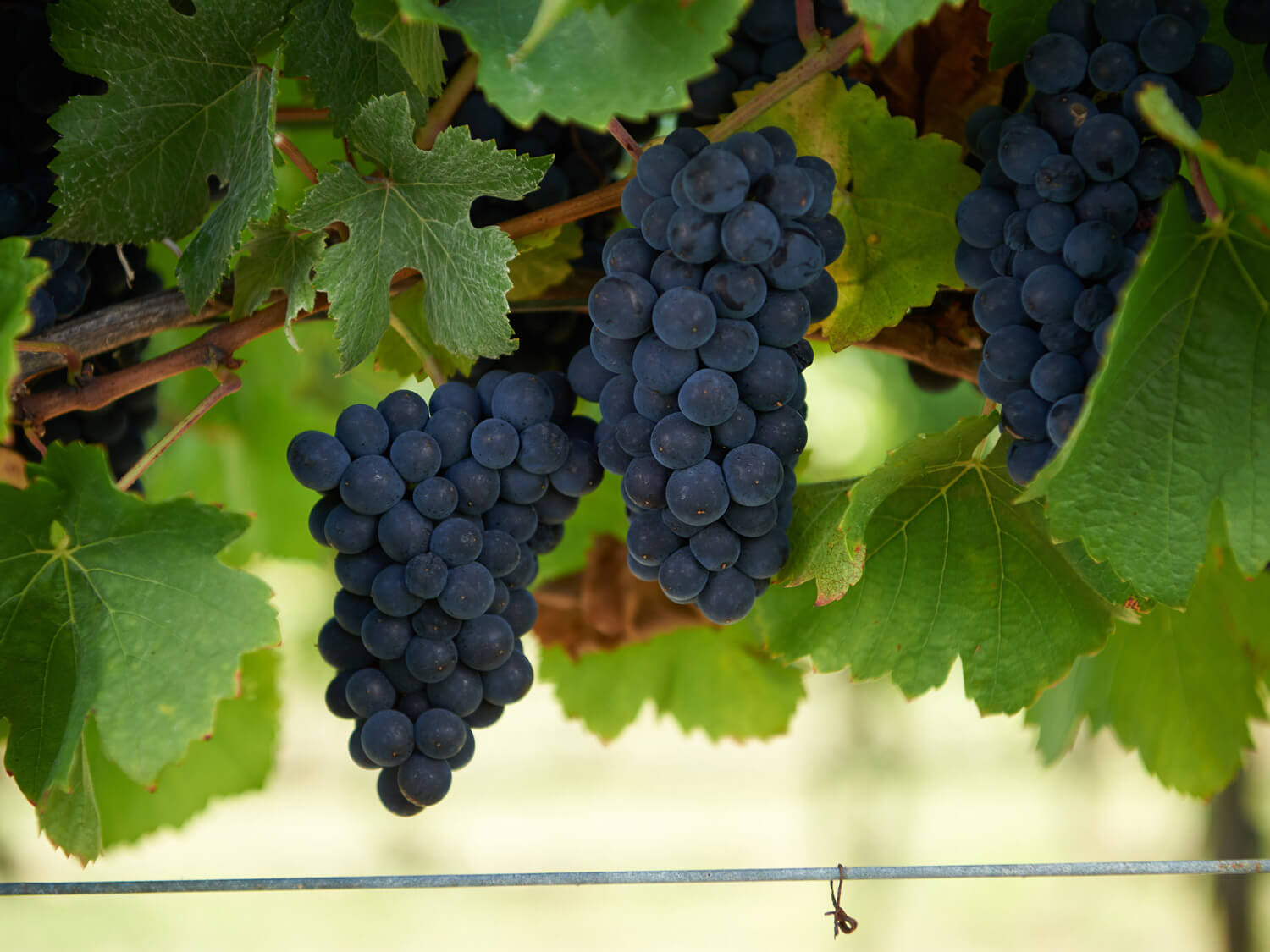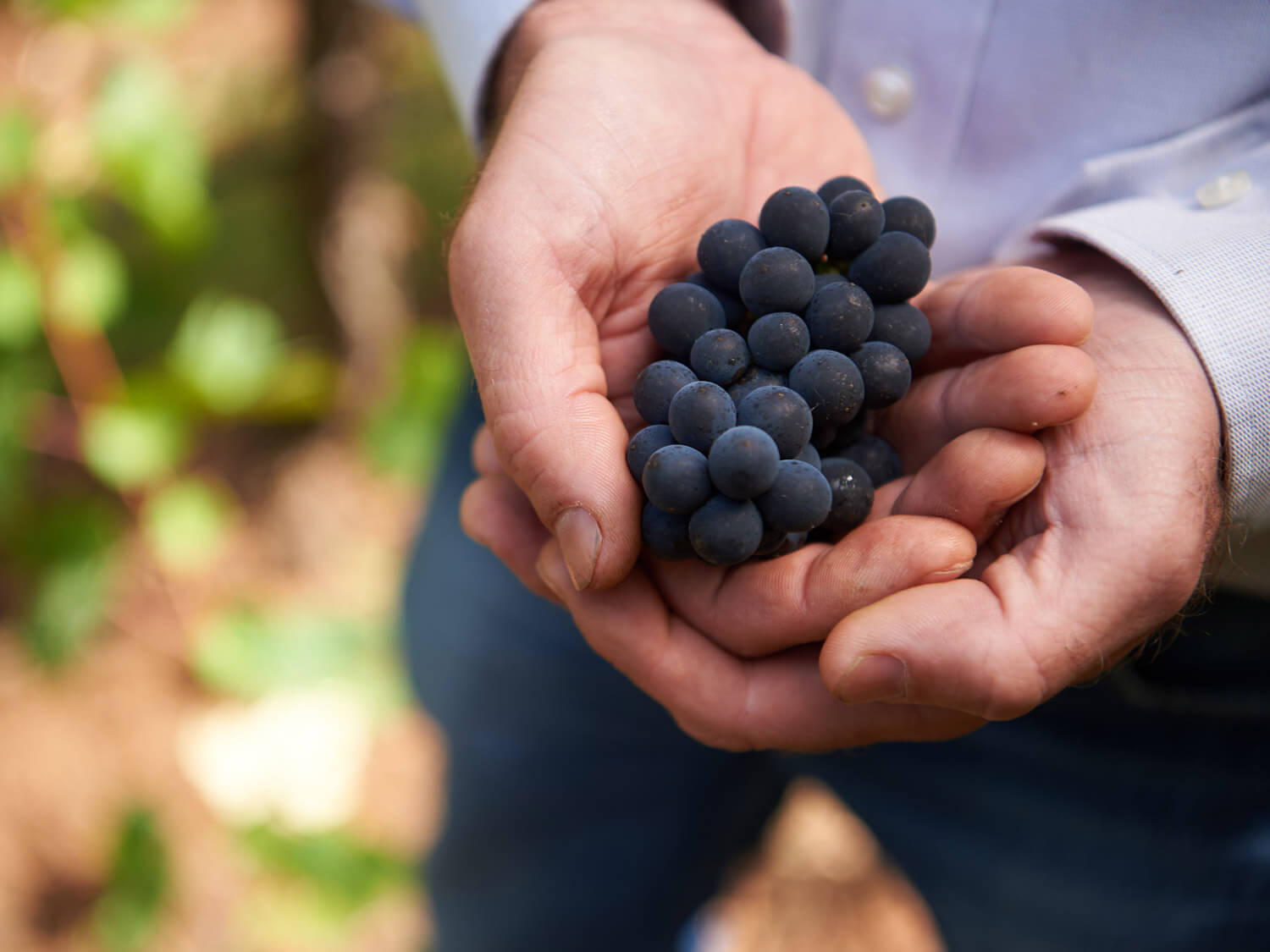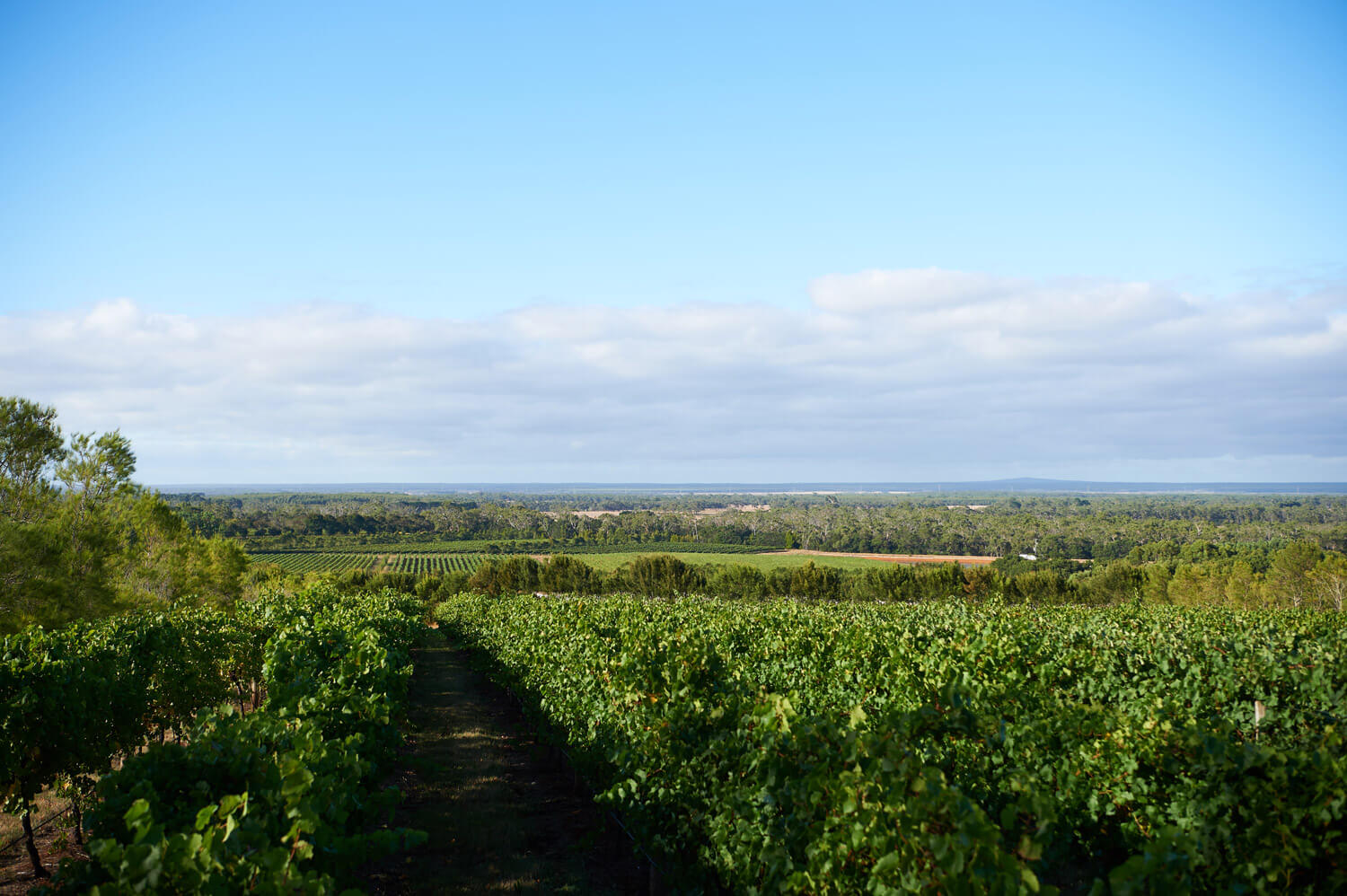The Seppelt Drumborg Vineyard is a significant one. Home to one of this country’s greatest rieslings, the site in south-western Victoria is also acclaimed for varietal bottlings of chardonnay, pinot noir and pinot meunier. The very cool marginal climate presents numerous viticultural challenges, but it also positions the site as one for premium fruit and premium wines. With a quarter of a century at the viticultural helm, Larry Sadler employs the collective knowledge of his long-serving team and a close relationship with the winemakers in producing the highest quality fruit across over 90 hectares of vines.
First planted by Karl Seppelt in 1964, the Seppelt Drumborg Vineyard was isolated as one that would excel at producing riesling – a variety that would dominate the Australian white wine industry in the following decade – as well as be suitable for sparkling wine, a company specialty. Seppelt had chosen a difficult location in Henty, in Victoria’s south-west, with glacial winds that whip up from the Southern Ocean and across the plains. It was marginal viticulture and especially unusual for the time, where warmer regions ruled the day, but it resulted in uncovering one of this country’s greatest grape-growing sites.
Drumborg was the first commercial vineyard in the Henty region, and the first “Rhine Riesling” was released from the 1972 vintage. Its continuing success would promote others to plant in the district – notably the Thomson family of Crawford River – though the ruggedness of the conditions and its remoteness have ensured a relatively modest number of growers to this day.
The Drumborg site has been continually planted over the years, with B. Seppelt & Sons (the company was publicly listed in the 70s and ended up in the Southcorp portfolio, now Treasury Wine Estates) maintaining the largest vineyard in Henty, with 94 hectares under vine on this 190-hectare property. The plantings include several other riesling blocks, all with their own nuanced character, as well as pinot noir, chardonnay, pinot meunier, pinot gris, grüner veltliner and gewürztraminer.
Larry Sadler has been the vineyard manager for 25 years, so far working with nine senior winemakers over his tenure. “Since it was established, Drumborg has enjoyed a strong partnership between winemaking and viticulture, with everyone excited by the potential of the vineyard and the great wines it can produce,” he says. “Our philosophy at Drumborg is to grow the best fruit possible – quality is paramount – but we have a social responsibility to do the right thing and manage this vineyard sustainably.”
While Sadler notes that Drumborg is renowned for being challenging in a viticultural sense, with cold, wind and disease all major pressures, he says that it is ultimately a richly rewarding process. “By necessity, we use a range of labour-intensive management practices to mitigate the risks posed by the climate to achieve the best results,” he says. “It’s a marginal climate that requires a high level of attention to detail and the ability to adjust management practices to the season. When done well, the vineyard delivers exceptional wines that are a true reflection of the Drumborg terroir – wines of elegance, flavour intensity and minerality.”
The effects of the persistent wind can be devastating for yields, but a natural mitigation program has had additional benefits. “Wind is a significant factor that can limit vigour and cause shoot damage, impacting vine health during flowering,” says Sadler. “Over the last 30 years, tree lanes have been incorporated into the layout of the vineyard and planted every 25 rows, making a patchwork laced across the vineyard. Additionally, this hedgerow effect also provides a haven for insects.”
Those trees are native casuarinas (she-oaks), with the beneficial insect populations they harbour boosted by other native plantings. “We have a fantastic depth of biodiversity,” says Sadler. “We have tried to build a healthy ecosystem by revegetating land unsuitable for viticulture and planting numerous locally indigenous flowering species to maximise the habitat for strong populations of beneficial organisms, which has been enhanced by the planting of two insectariums. And the mid-rows are maintained with a permanent sward consisting of sown grasses and dozens of volunteer species.”
The vineyard borders the Annya State Forest to the north, which provides a rich diversity of animals and birds that utilise the habitat on the property. “Our approach is to steer around nature rather than control it,” says Sadler. “In 2017, after a particularly wet winter, our significant kangaroo population took to eating buds in spring, severely affecting inflorescence numbers. In response, we built an exclusion fence and began herding out the kangaroos just prior to budburst.” Those kangaroos are only excluded during a few weeks over budburst, with their browsing not causing significant damage otherwise, and they bring with them some benefits.
“The kangaroos, along with many other animal species, bring with them a seed bank of native grasses and microflora in their manures,” says Sadler. “The long-term impact of having a complex ecosystem within the vineyard is hard to quantify, but I think that it is a worthwhile goal in itself and adds to our social license to operate. We are custodians of this great bit of dirt, a living organism that produces great wines – and it’s also important to acknowledge that it grows on the land of the Gunditjmara people. It’s a special vineyard, and I’ve been blessed to have the privilege of looking after it.”
And while Drumborg is best known for riesling, Sadler notes that experimentation has always been a mainstay at the site. “It was risky setting up a vineyard in Henty in the ’60s, long before cool climate viticulture was a thing,” he says. “Seppelt initially trialled dozens of varieties at Drumborg, planting chardonnay and pinot noir in the early ’70s and then planting a clonal trial block in the ’80s. They imported Burgundy chardonnay clones ENTAV 95, 96, 76, 78, 121, 125 and 277 long before they emerged as industry favourites in the last decade. This experimentation has continued with newer varieties, including grüner veltliner.”
Sadler has found that grüner has stood up to the climatic conditions, which are both his constant challenge and what he believes helps make wine from the site truly special. “Great wines are often made on the margins,” he says. “I think that the cool, challenging growing conditions that usually prevail up to the middle of December have a link to the acid structure and balance that provide the minerality and acid backbone that are hallmarks of Drumborg wines. You have to take the good with the bad – and be pretty resilient.”
As forbidding as the weather may be between the vines, especially given that much of the pruning is done in the cooler months, it’s testament to the positive work culture and pursuit of perfection that has helped maintain an incredibly loyal workforce. “My vineyard team collectively boasts nearly 200 years of experience on the Drumborg site – that is a lot of familiarity and anecdotes to fuel the evolution of our vineyard management, and I think it contributes to a human element of terroir,” says Sadler. “Their care about their work and engagement with the quality has had a huge impact on the retained knowledge of the site and the ability for us to achieve the wine quality we have year in, year out, in some pretty rough seasons.”
Sadler jokes that his crew say he is worse than the crows, with his habit of tasting the fruit at all stages. “I start tasting fruit from the first hint of colour when the acid is so high that it makes your eyes water and you have to roll the berry around in your mouth until you can bear to taste it,” he says, “until the flavours start to fade as the natural acid recedes in the scraps of fruit left post harvest. Following the flavours so closely gives me a unique perspective to see patterns and differences that allow me to guide my winemakers to what they’re looking for, or to prepare the logistics of harvest to ensure that we don’t miss the window of peak flavour.”
This personal survey combined with feedback from the winemaking team is a critical part of the site management, with small changes made to achieve the best outcomes. “Adjustments to pruning, soil nutrition management, canopy management and leaf plucking are all used to this end,” says Sadler. “We are seeking to create perfect flavour, acid and structural balance in the fruit that can then be replicated in the wines. Drumborg is a very manual vineyard in the care of people who do hard work in bad weather year after year. It’s hands on – a premium luxury vineyard producing high-quality fruit in a sustainable way.”

